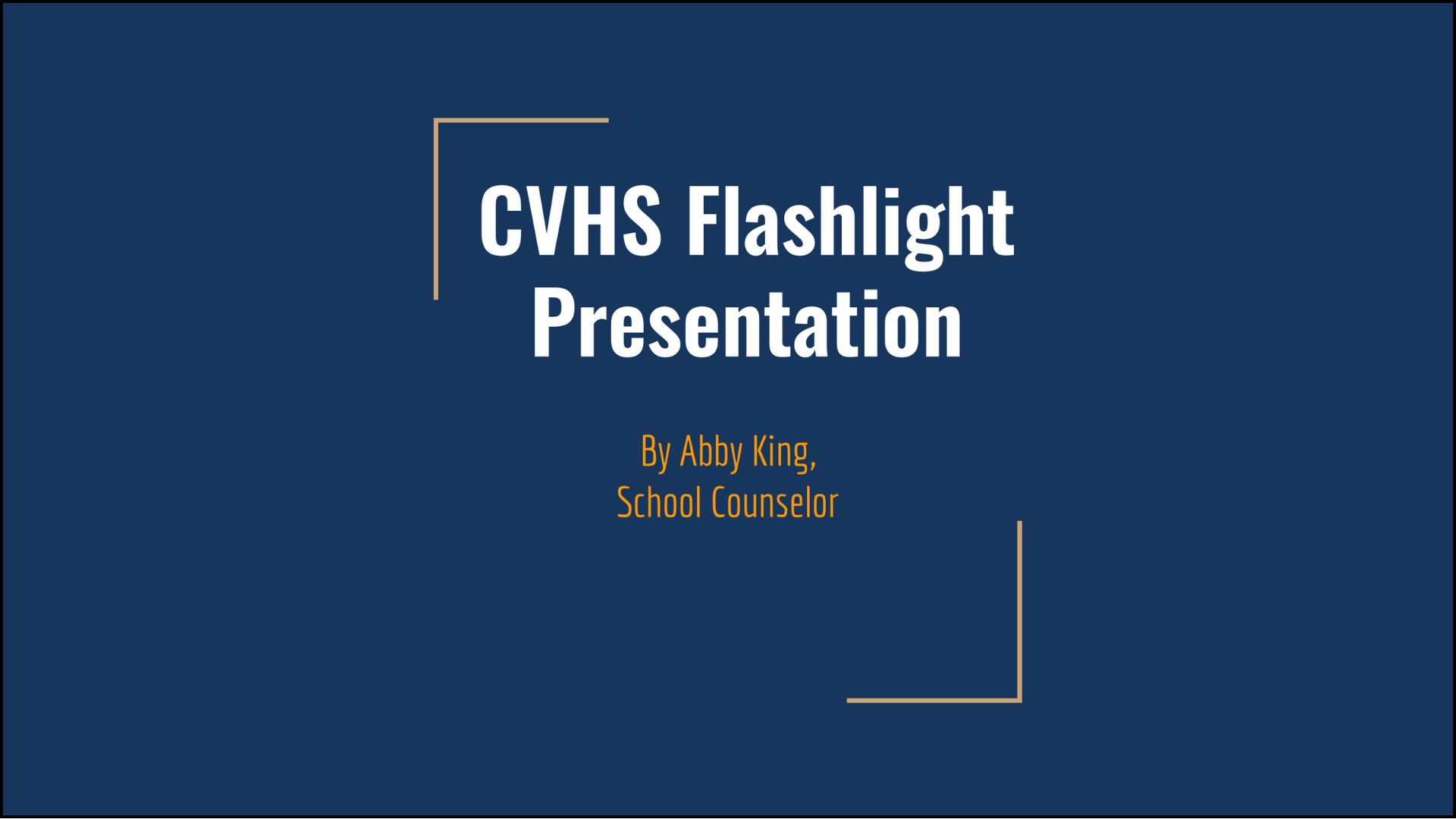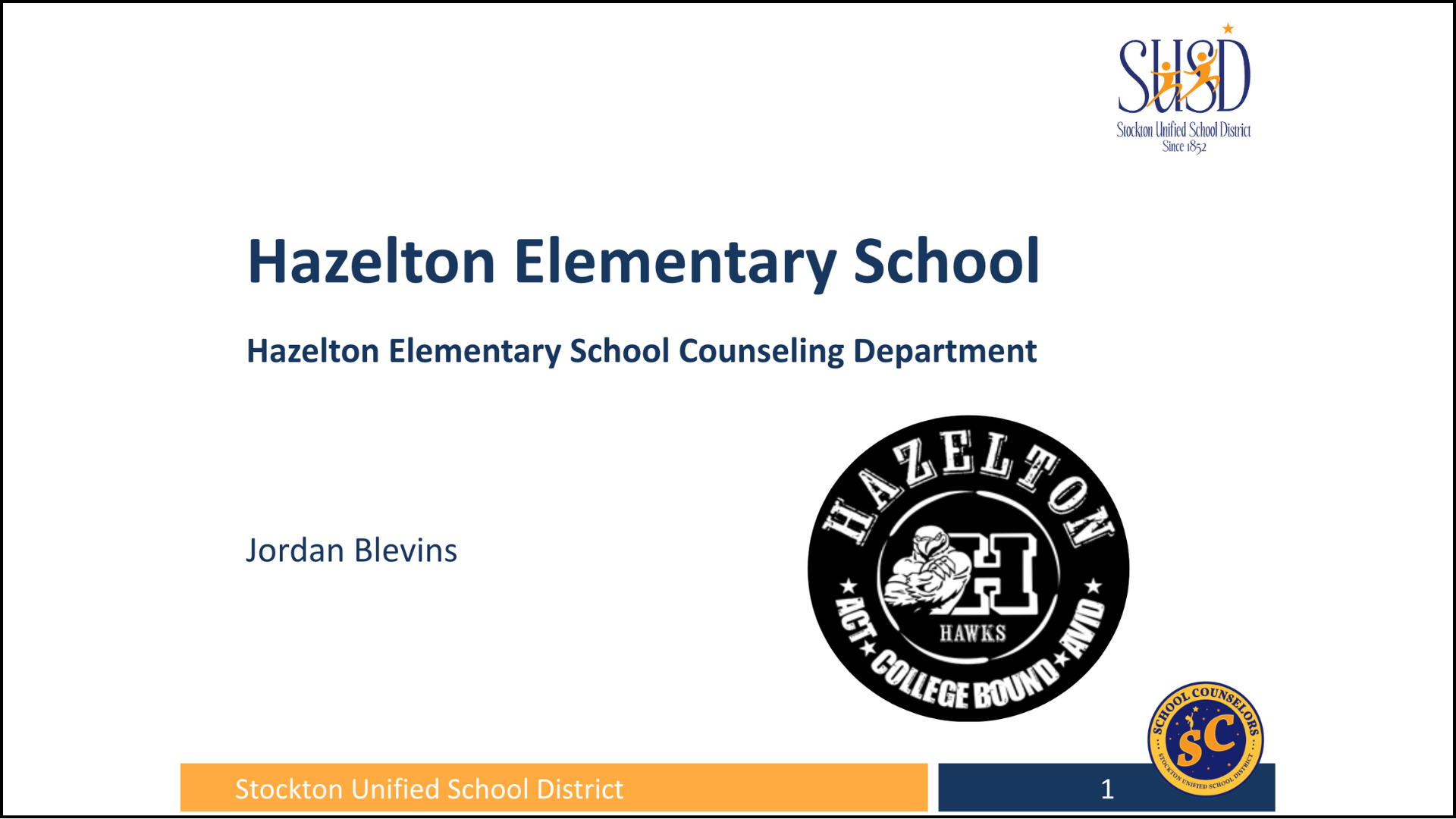Shine a Light on Your School Counseling Program Results with a Flashlight Presentation
/Flashlight presentations shine a light on one key component of your school counseling program’s impact.
Showcasing the impact and results of your school counseling program is an essential tool for sharing successes, advocating for your program, and creating systemic changes.
Rather than attempting to highlight every effort, we encourage school counselors to adopt the "Flashlight" results report approach outlined by Dr. Trish Hatch and Dr. Julie Hartline in The Use of Data in School Counseling, Second Edition. Just as a flashlight illuminates a specific area, this method focuses on shining a light on one particular success or significant outcome. By concentrating on a single, well-documented example, school counselors can effectively share the value of their work with administrators, school boards, and other key educational partners, making their achievements clear and compelling.
This blog post will guide you through creating an engaging Flashlight results presentation that resonates with your community. You’ll learn how to spotlight the most impactful aspects of your school counseling efforts, such as deciding what information to share, identifying your audience, drafting the presentation, and evaluating its effectiveness.
The Flashlight approach provides a structured and engaging way for school counseling teams to present data and outcomes and share the results of a new lesson, an ongoing activity, or a targeted intervention, thereby ensuring your work and advocacy efforts are recognized by all.
Let's shine together!
What is a Flashlight?
“What is a Flashlight? Common knowledge suggests that a real flashlight does not light up an entire room; rather, it shines a beam of light on one area or in one direction on a specific target.
In the same way, rather than school counselors showing the impact of everything they do, it is suggested school counselors select one thing they have done (a school counseling curriculum or intentional intervention) and ‘shine the flashlight’ on it.”
Flashlight presentations will:
Measure ONE thing well! Shine a beam of light in one direction
Provide a brief (6-8 minute) visual presentation made to educational partners
Contribute to increased advocacy, awareness, reflection, and growth
3 Steps to Creating a Flashlight presentation
Decide which information you want to share
Click to expand each section:
-
Your presentation will likely look different if you’re sharing it with the school staff or the school board as compared to sharing it with students and families.
You may even decide to create a few different Flashlight presentations for varying audiences!
-
What do you want your Flashlight to convey at a minimum? If they don’t get anything else from your Flashlight, what are one or two things you hope they take away from it, at a minimum?
Example topics to highlight in a Flashlight presentation:
The measurable impact in data resulting from a school counseling activity that you are currently implementing in your program
Pre/post test results from a new lesson that you will create and deliver
The results of an intentional intervention that you’ve designed based on your school attendance, behavior, or achievement data
-
Your Flashlight may highlight various types of data:
Process data: who/how many received lesson or intervention, when, and where
Perception data: student attitudes, knowledge, skills
Outcome data: achievement and achievement-related data; behavior, attendance
Tip: When possible, connect your results and data to your school’s or district’s goals, such as Local Control and Accountability (LCAP) goals
2. Draft and evaluate your Flashlight presentation
Presentation Template:
Our Hatching Results Flashlight presentation template makes it easy to get started! click the image to make your own copy.
Our Hatching Results Flashlight presentation template makes it easy to get started by outlining all the components of a great Flashlight presentation!
Just make a copy of this Google Slides template and start adding in your specific information!
Tip: If you prefer using Canva or another presentation tool, refer to our template as a guide as you build out your slide deck!
Presentation Rubric:
Use our Hatching Results Flashlight presentation Rubric to be sure your Flashlight includes all the necessary elements.
Use our Hatching Results Flashlight Presentation Rubric to be sure your Flashlight includes all the necessary elements.
Once it’s complete, evaluate your presentation using the rubric (or ask a colleague to evaluate it for additional feedback!) and make tweaks as necessary.
If desired, share and request additional feedback from your school administrator, district leader, etc. See the “Tips for Leaders” section below.
“Instead of measuring every lesson delivered or intervention conducted, it is suggested that counselors use the Flashlight approach to focus on sharing the impact of a lesson or activity currently implemented or an intervention the data indicated must be addressed in the areas of attendance, behavior, or achievement.”
3. Present your Flashlight to educational partners!
Determine whether you will present your Flashlight live or pre-record it to be played on demand.
If pre-recording, determine the logistics:
Will you use Zoom, Screencastify, or something else to record it?
When and how do you want to send it out or post it?
If presenting live, request time at an upcoming staff meeting, for example, and go ahead and get it on the calendar. Remember, you’re aiming for the presentation to be between 6-8 minutes, followed by some questions or discussion.
“The Flashlight approach is one of many ways school counselors can create presentations to be shared with sites, school boards, legislators, policymakers, and other stakeholders.”
tips for leaders
Leaders can take various actions to support school counselors and administrators in measuring and sharing program results. Below are a few ways they can support:
Begin with listening and learning conversations. Gather information on school counselors’ and administrators’ current beliefs, feelings, knowledge, and skills related to measuring and sharing program results.
Remind school counselors and administrators that program evaluation is about improving, not proving. The process of measuring and sharing results helps us improve our services for students so we can make a greater impact and expand access and opportunities!
Set minimum expectations for school sites to measure and share program results, using the information gathered from your listening and learning conversations to guide your decisions about expectations. Provide a “freedom within limits” approach and ensure that a level of site autonomy is protected. Consider scaffolding expectations or enabling sites to opt-in to different levels of difficulty, depending on their comfort levels.
Provide regular, protected time during the school day for school counselors to collaborate across sites as they begin evaluating their program. Measuring and sharing results is much easier within a community of trust. Consider asking sites to practice presenting results to one another to build confidence.
Flashlight Presentation examples
It’s helpful to remember that these are just a few examples!







